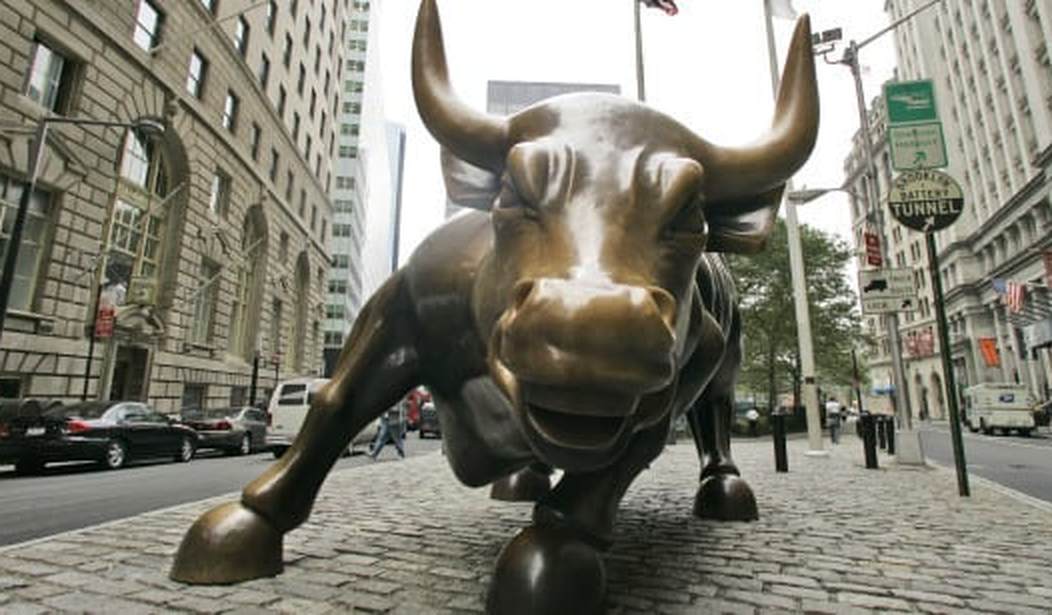WASHINGTON – A group of top economists said a law intended to prevent future bailouts for big banks has only institutionalized the practice, while failing to address the problems that led to the financial crisis of 2008.
The 2010 Dodd-Frank legislation mandated hundreds of major regulations to control risky financial activities, with the aim of preventing a repeat of the taxpayer bailouts of “too big to fail” financial institutions.
Many experts have concluded that Dodd-Frank has worsened the too-big-to-fail problem by expanding capital requirements that contributed to the 2008 financial crisis by allowing banks to use arbitrary measures of risk, leading them to hold capital that did not have the same loss-absorbing capacity as equity. Since the late 1980s, federal regulators have required banks to hold a certain amount of capital (such as equity) based on the amount of money they lend to customers and the securities they hold (the bank’s assets). These rules are intended to force banks to build a cushion against unexpected losses.
Charles Calomiris, an economics professor at Columbia University’s Graduate School of Business, said Dodd-Frank has established an “explicit process” for bailing out a too-big-to-fail institution.
“Unfortunately, Title II of Dodd-Frank institutionalized the bailouts of too-big-to-fail banks rather than avoiding them. It did that because it creates a political path of least resistance for politicians to bail out the large banks,” Calomiris said at a panel hosted by the Heritage Foundation. “In fact, it not only creates the actual process through which that would happen, but even funds it through a special new tax.”
Dodd-Frank’s Title II gives the Treasury Department and the Federal Deposit Insurance Corp. (FDIC) the authority to “liquidate” financial companies. The financial reform law permits bailouts through the law’s resolution authority provision. This bailout would be financed by taxes on surviving banks, and if these funds are insufficient, then by taxpayer money.
To ensure resiliency in the financial system, Dodd-Frank regulations should be replaced by measures requiring large banks to increase their capacity to deal with losses, Calomiris said. This could be done by substantially raising the minimum ratio of the book value of their equity relative to the book value of their assets. In other words, require banks to increase their capital reserves.
In addition to higher equity requirements, Calomiris said requiring banks to issue contingent convertible bonds – a form of debt that would convert to equity if the market value of this debt relative to assets drops to a certain minimum – could impose market discipline on banks and, in the event of a financial crisis, allow them to raise new capital quickly.
Dodd-Frank created the Financial Stability Oversight Council (FSOC) to oversee and identify risks in the financial system. If FSOC finds that financial institutions create “systemic risks” and threaten financial stability, it can designate these firms systemically important and require them to satisfy enhanced capital, leverage, liquidity, and supervision requirements similar to those that Dodd-Frank prescribes for large banking institutions.
“What we know from the way regulators behave does not give us a lot of confidence to believe that the FSOC is going just by virtue of its existence to change much about credible discipline of large banks when you need it, which is during bad economic times,” Calomiris said.
He said FSOC does not present a very serious commitment to reining in “too big to fail” because politicians and regulators will continue to have strong incentives during bad times to “forebear”– or allow troubled banks to continue operating by “not recognizing losses in a very transparent or proactive way.”
Calomiris said banks and their regulators often find it convenient to understate expected loan losses, and thereby overstate equity values. Banks have the incentive not to recognize loan losses because doing so might require them to raise more capital, which they can do through various ways, such as issuing new equity or retaining earnings.
Similarly, regulators also have the incentive to ignore losses because it is inconvenient for politicians. This problem is exacerbated when equity requirements are expressed relative to “risk-weighted assets,” which allow banks and regulators to determine which kind of investments are safe and have a lower capital requirement and which are risky and require more capital to back them.
Even if the book value of equity was honestly being accounted for to be considered an accurate measure of the health of a bank, Calomiris said book value of capital is not a very precise indicator of a modern bank’s health because items that lie off their balance sheets, such as securities, drive most of its cash flows. This makes the job of regulators much harder when trying to assess the right level of capital a bank should hold to be considered healthy.
Mark Flannery, an economist at the University of Florida, said fixing capital requirements is unlikely to end the too-big-to-fail problem because they are tied to book capital measures, which are easily manipulated by banks.
“The regulations were all written in terms of book value. A banker can always say to look at its book capital ratio showing that it’s adequately funded,” Flannery said. “So now the supervisors have to…discredit the accounting numbers. Not that it can’t be done, just that it’s a long process.”
He said supervisors have been put in an extremely difficult position by being tasked with trying to take steps for the dispersed good of maintaining a healthy financial system, while imposing costs on a limited number of people (the bank’s shareholders).









Join the conversation as a VIP Member